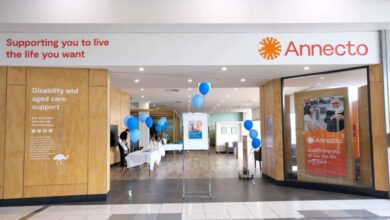Home sweet hospital
Financial pressure on the health system is being eased by a scheme which allows patients to be treated in their own residence.
The Hospital in the Home (HITH) program is becoming increasingly popular with patients, and contributed to the NSW government's allocation of a further 2009 beds last year.
Reports from patients and medical staff have been positive, with the program being as clinically effective as in-hospital treatment.
In Sydney's Campbelltown region, there are about 30 beds allocated under the program, which is the equivalent of a regular ward full of patients. This frees up much needed space in the standard hospital system.
The director of Ambulatory Care at Campbelltown Hospital, Dr Nicholas Collins, said that patients receive the same treatment as they would in hospital for a variety of acute and subacute conditions.
"The aspiration of most Hospital in the Home services is to provide an equivalent care to that which you would get in hospitals," he said.
"They will get everything from nurses who will perform standard observations - blood pressure, pulse and the like, who may have the ability to perform point of care testing for certain things like blood sugar or INR monitoring."
Pauline Dobson, a clinical nurse consultant in the immunology and infectious diseases unit at John Hunter Hospital, Newcastle, has witnessed the positive impacts of this alternate model of care.
She says that patients experience a variety of benefits from receiving care in an environment that is familiar.
Dobson explained that the nurse may tailor treatment to a once or twice daily visit. Everything is undertaken at this visit - so a daily/continuous antibiotic may be given rather than one that need to be given bolus qid.
"Point of care testing may be utilised to give the HITH nurse an immediate pathology result and some services are using mobile technology as well," she said.
A systematic review printed in the Medical Journal of Australia last year suggested that the review "demonstrated that HITH reduces delirium, but it may also reduce iatrogenic infections, galls and adverse events".
Dr Collins said that the majority of patients think the program is a great idea, with about 99 per cent taking up the opportunity of a hospital in the home program when offered.
"They get to sleep in their own bed, eat their own food, watch their own TV, and for some there is an opportunity to engage with the workforce - through mobile technology and internet-based technology," he said.
There is not only significant patient and carer satisfaction and confidence with such programs, but nurses and medical professionals are quick to provide positive feedback of the privileges of working within someone's home. "Generally, once being managed on their own turf and not in a foreign environment of a clinical unit or ward, patients are far more receptive," Collins said.
"So I think staff get a greater level of satisfaction out of the process."
There is presently much concern around the country over emergency departments failing to meet national standards and governments are also seeking to reign in health costs. This program could help ease the financial pressure on hospitals by reducing bed block by allowing patients to be discharged earlier and cutting inpatient bed day costs.
Cost depends on the individual clinical case, so there are some situations where this is clearly more cost effective - such as the management of deep vein thrombosis.
With a suggested $775 million being pulled from the NSW health budget, Collins believes that this is effective alternative model to providing acute care in hospitals.
"What it does is utilise the available technology and clinical experience of usually very experienced nursing staff in particular - medical and allied health staff also," he said.
"It uses those staff in a very patient-focused multidisciplinary way to deliver care in an alternative setting - so it's able to identify and risk manage patients.
"It's not all rocket science, some of it is pretty simple, but is a logistical change moving slightly away from the bigger institution."
Email: [email protected]





